 The global HVAC systems market (commercial, industrial and residential) was valued at USD 130.5b in 2019. The residential segment accounted for a market share of more than 40.0% in 2019, driven by increasing urbanization, climate change, and government-led incentives and rebate programs. Source
The global HVAC systems market (commercial, industrial and residential) was valued at USD 130.5b in 2019. The residential segment accounted for a market share of more than 40.0% in 2019, driven by increasing urbanization, climate change, and government-led incentives and rebate programs. Source
Essential Resources from ASHRAE
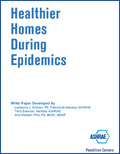
Preparing your home in advance can help you, your family, and other household members stay physically and mentally healthy during an outbreak. This white paper describes strategies for protecting household members from infection and for isolating those who develop the infectious disease or have a high risk of severe outcomes if they become infected. This paper also describes the supplies you might need, the information you should gather about your home and its heating and cooling systems, and other actions you can take before or during an outbreak to minimize your household’s risk of illness.
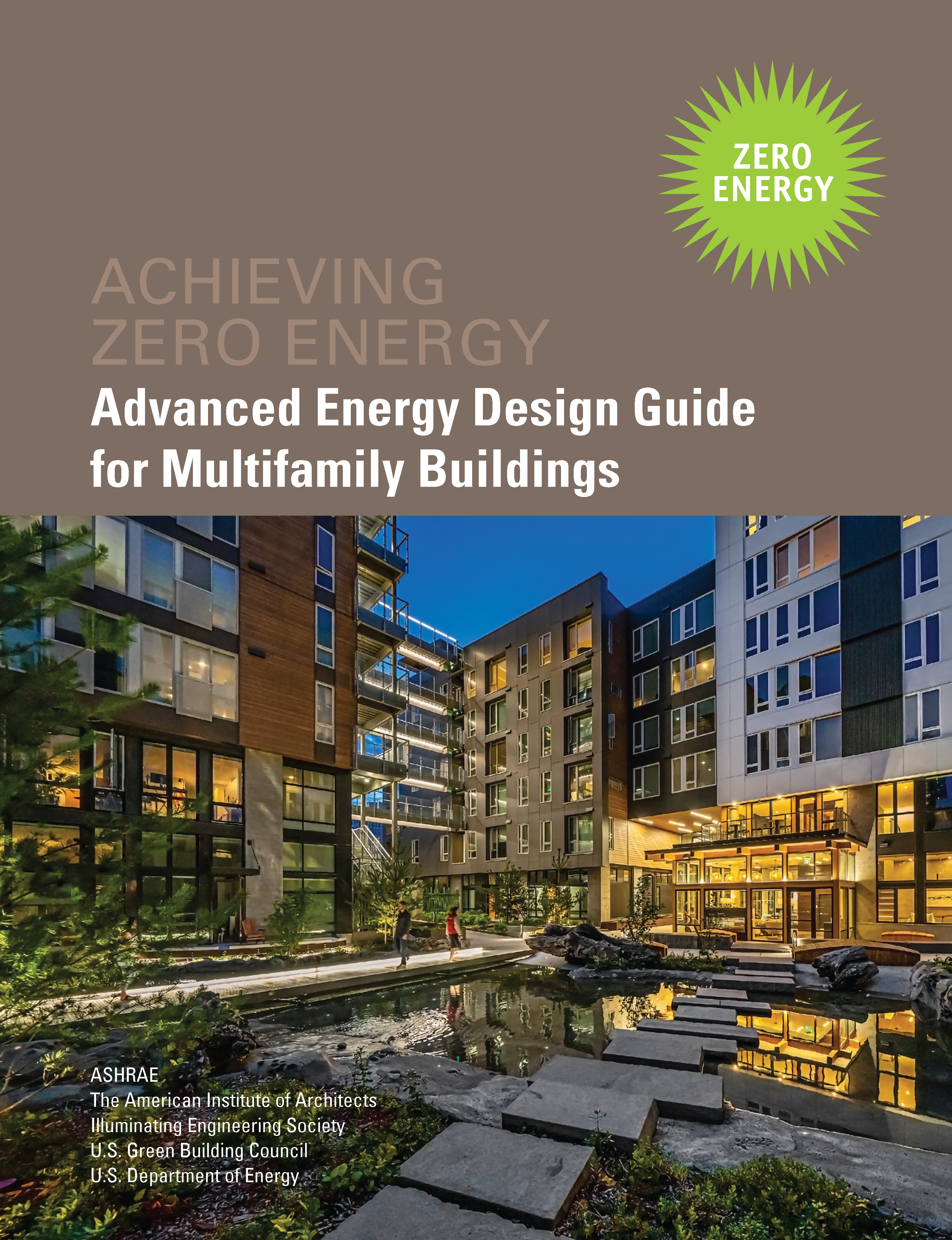
Advanced Energy Design Guide for Multifamily Buildings
This AEDG establishes energy performance goals for achieving zero energy in multifamily buildings covered by ANSI/ASHRAE/IES Standard 90.1 up to 20 floors and includes tenant spaces (with 1-3 bedrooms, a kitchen, a bathroom, and living space), first-floor spaces (such as common meeting rooms, a workout room, and management offices, leased offices, and light retail), vertical transportation, and laundry facilities.
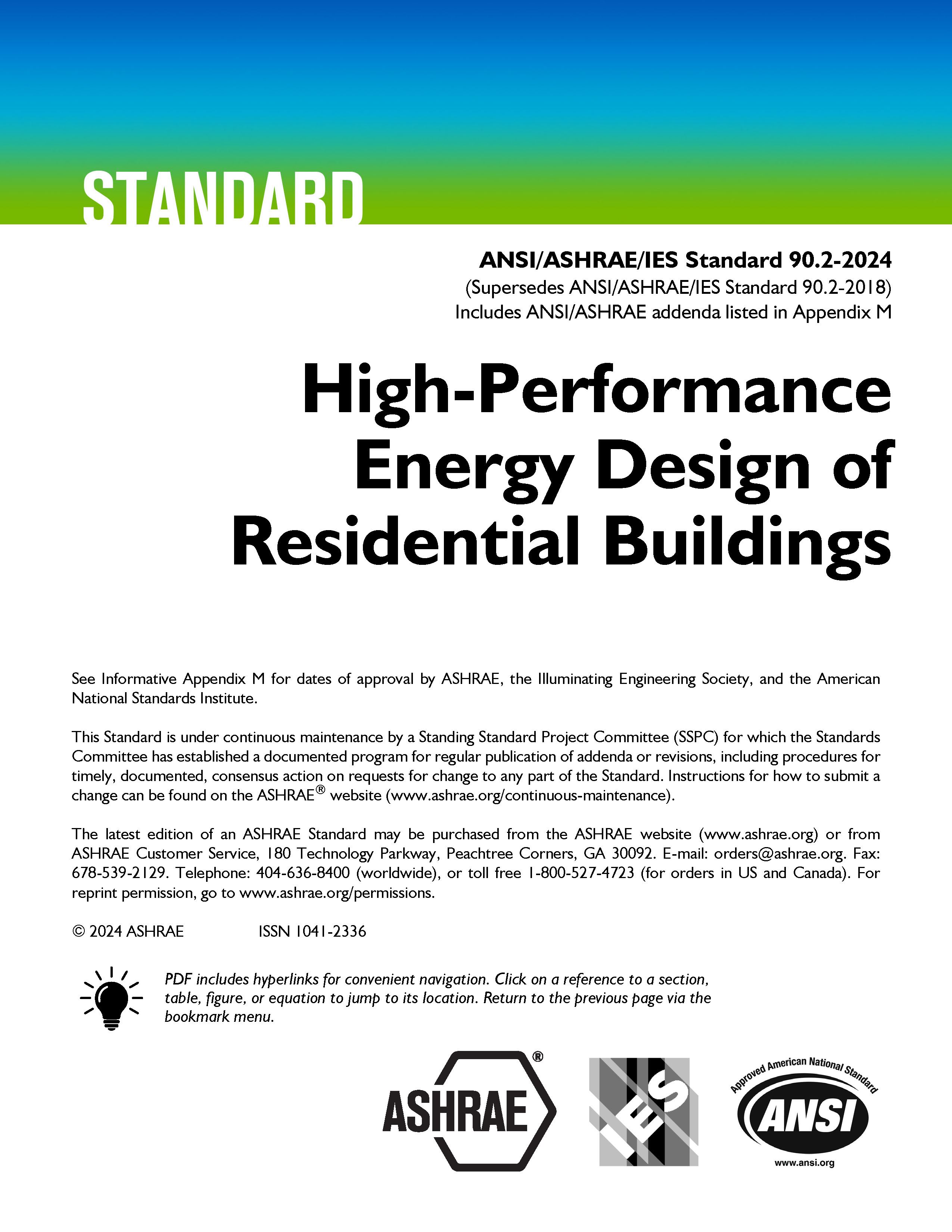
Standard 90.2-2024 -- High-Performance Energy Design of Residential Buildings
This standard provides minimum requirements for the energy-efficient design of residential buildings, including new dwelling units, new portions of dwelling units and their systems, and new systems and equipment in existing dwelling units.

Residential Indoor Air Quality Guide: Best Practices for Home Design, Construction, Operation, and Maintenance
Focused solely on single-and multifamily dwellings covered in ASHRAE Standard 62.2, this unique full-color resource provides tools that builders, home designers, and residents can use to ensure excellent IAQ, while considering budget constraints and other functional requirements.
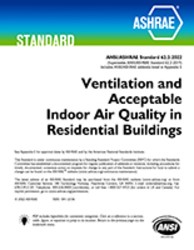
Standard 62.2-2022 -- Ventilation and Acceptable Indoor Air Quality in Low-Rise Residential Buildings (ANSI/ASHRAE Approved)
The standard describes the minimum requirements to achieve acceptable IAQ via dwelling-unit ventilation, local mechanical exhaust, and source control. It also includes secondary requirements that focus on properties and performance of residential ventilation systems.

ASHRAE Design Guide for Multifamily Residential Buildings
ASHRAE Design Guide for Low- to Mid-Rise Multifamily Residential Buildings brings together information from codes, standards, and other guidance to outline best practices to achieve high-performance multifamily residential buildings and improve energy efficiency and indoor environmental quality in the multi-family/residential sector.
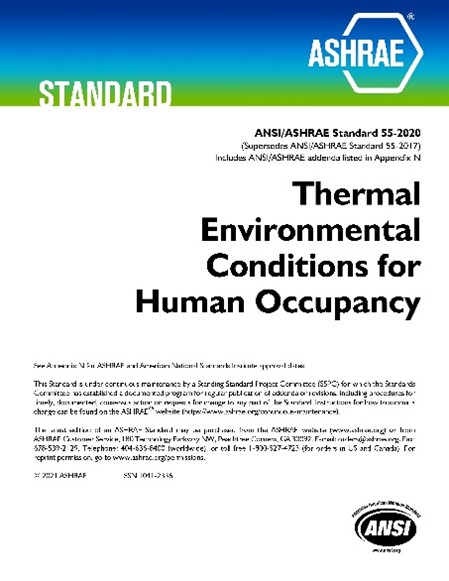
Standard 55-2020 -- Thermal Environmental Conditions for Human Occupancy
The 2020 edition of ANSI/ASHRAE Standard 55 incorporates eight published addenda to the 2017 edition. This version steers users toward the analytical method (and companion elevated airspeed method) and replaces the graphical method with a series of examples that use the analytical method. With multiple freely available third-party implementations of the analytical method, barriers to its use have been greatly reduced, allowing for greater flexibility and accuracy than with the graphical method.
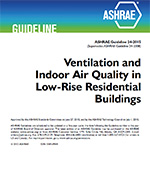
Guideline 24-2015 -- Ventilation and Indoor Air Quality in Low-Rise Residential Buildings
This guideline provides information on how to achieve good IAQ beyond minimum requirements. It provides information relevant to ventilation and IAQ on envelope and system design, material selection, commissioning and installation, and operation and maintenance.
Other Resources